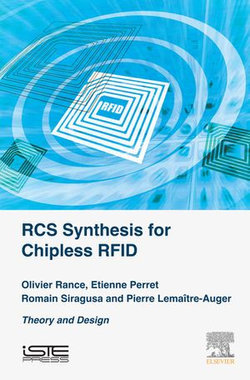The considerable growth of RFID is currently accompanied by the development of numerous identification technologies that complement those already available while seeking to answer new problems. Chipless RFID is one example.The goal is to both significantly reduce the price of the tag and increase the amount of information it contains, in order to compete with the barcode while retaining the benefits of a flexible reading approach based on radio communication.To solve the problem of the number of bits, this book describes the possibility of coding the information at the level of the overall shape of the RCS of the tag, which would facilitate reaching very large quantities. The design of the tags then returns to the resolution of the inverse problem of the electromagnetic signature. The proposed design methodology regularizes the problem by decomposing the signature on a basis of elementary patterns whose signature is chosen in advance. - Includes a theoretical presentation of scattering phenomenon in electromagnetism, regrouping elements from classical RFID, pulse radar, and antenna theory - Features a new coding technique based on magnitude level that is presented and characterized for different kinds of tags - Proposes, for the first time, RCS synthesis based on a physical approach for wide-frequency bands



Share This eBook: